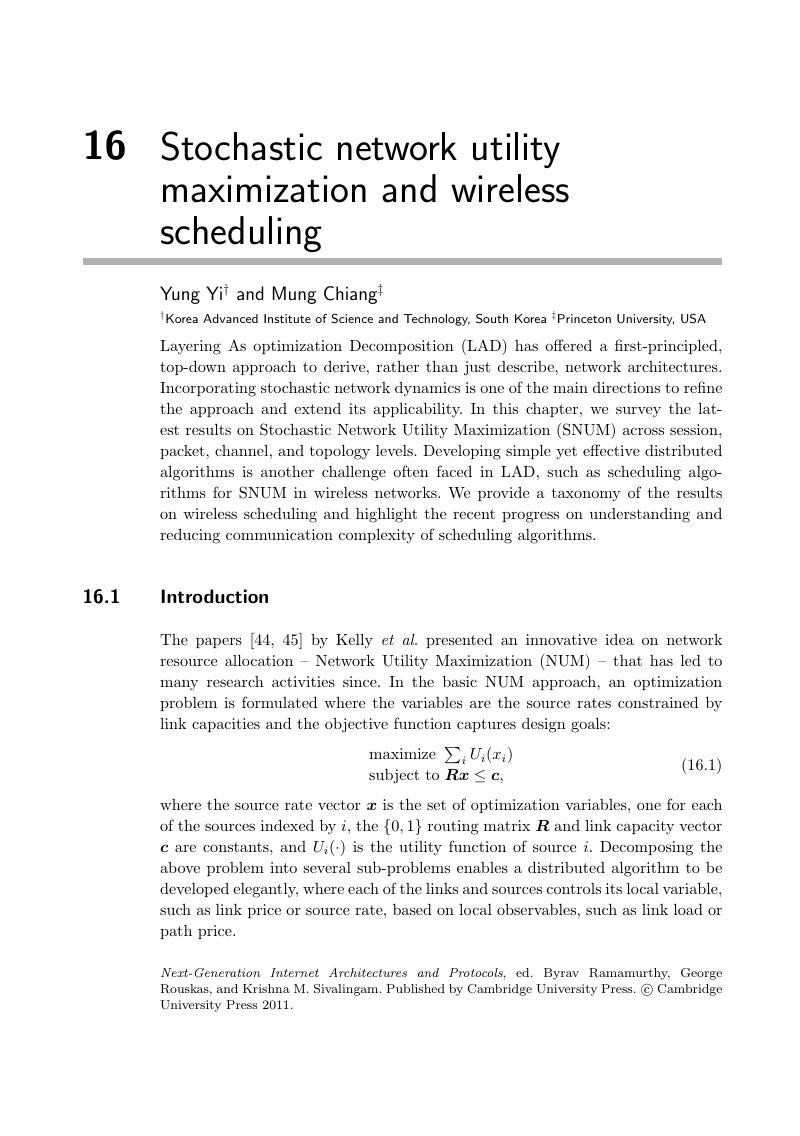Book contents
- Frontmatter
- Contents
- Contributors
- Preface
- Part I Enabling technologies
- Part II Network architectures
- Part III Protocols and practice
- Part IV Theory and models
- 15 Theories for buffering and scheduling in Internet switches
- 16 Stochastic network utility maximization and wireless scheduling
- 17 Network coding in bi-directed and peer-to-peer networks
- 18 Network economics: neutrality, competition, and service differentiation
- About the editors
- Index
- References
16 - Stochastic network utility maximization and wireless scheduling
from Part IV - Theory and models
Published online by Cambridge University Press: 05 October 2012
- Frontmatter
- Contents
- Contributors
- Preface
- Part I Enabling technologies
- Part II Network architectures
- Part III Protocols and practice
- Part IV Theory and models
- 15 Theories for buffering and scheduling in Internet switches
- 16 Stochastic network utility maximization and wireless scheduling
- 17 Network coding in bi-directed and peer-to-peer networks
- 18 Network economics: neutrality, competition, and service differentiation
- About the editors
- Index
- References
Summary

- Type
- Chapter
- Information
- Next-Generation InternetArchitectures and Protocols, pp. 324 - 358Publisher: Cambridge University PressPrint publication year: 2011
References
- 2
- Cited by



